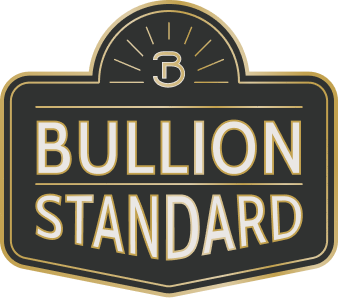What to Know About Collectible vs. Investment-Grade Bullion
By Bullion Standard ·
6 min read
Gold has long been viewed as a symbol of wealth and a valuable asset. Its stability and global recognition make it an attractive option for any investment portfolio.
If you're entering the gold market, you’ll typically encounter two investment paths: collectible gold, prized for its rarity and history, and investment-grade gold, valued for its purity and long-term stability. But if you're new to the world of precious metals, the distinction between collectible and investment-grade gold might be confusing.
At Bullion Standard, we strive to empower investors with the knowledge needed to make sound decisions about their financial future. In this blog post, we’ll explore the differences between collectible and investment-grade bullion so you can choose which is right for you.
What is Collectible Gold?
Collectible gold consists of bullion coins and bars with historical, cultural, or artistic value beyond their gold content.
These items are often rare and highly sought after by collectors due to their intrinsic value—which includes factors like rarity, age, and condition.
For example, vintage coins or limited-edition releases from significant historical periods tend to appreciate over time as their availability becomes increasingly limited. Collectors often see this type of gold as both a financial investment and a way to own a piece of history.

What is Investment Grade Gold?
Unlike collectible gold, investment-grade gold is valued strictly for its pure gold content. It's typically found in the form of bullion gold bars or high-purity gold coins.
These products are recognized for their standardized weight and purity, usually .999 or higher, and are minted by the government or private refineries. Investment-grade gold also has a straightforward connection to the current gold market price, meaning its value fluctuates directly with global gold rates.
All in all, investors who want to focus on wealth preservation and liquidity often opt for investment-grade gold because of its ease of trading and transparency in pricing.
Key Differences Between Investment Grade and Collectible Gold
Value Determination
When it comes to collectible gold, value isn’t just about the gold content. Rarity, condition, age, and collector demand all play a role. A limited-edition coin or one with a unique history can fetch a premium price.
On the other hand, investment-grade gold gets its value from the spot price, which fluctuates with the market. Gold bullion bars and coins in this category are valued for their weight and purity, making pricing more transparent and straightforward.
Liquidity
In terms of liquidity, investment-grade gold has a clear advantage. Gold bullion bars and coins are widely recognized, making them easy to buy or sell globally. Plus, since they’re traded based on their gold content, transactions are typically quick and straightforward.
On the flip side, collectible gold can take longer to sell, as finding the right buyer who appreciates its rarity or history can tend to be more difficult. This means liquidity is slower in this niche market.
The Benefits of Collectible Gold
One main benefit of collectible gold is that it offers an attractive potential for long-term returns.
Rare coins and bars are often highly sought after, and their value can rise significantly above the gold spot price. As demand increases and certain items become rarer, the value of collectible gold can grow substantially. So, for investors with patience, collectible gold presents a unique opportunity for higher returns than standard bullion.
In addition to its financial benefits, collectible precious metals are prized for their historical and artistic value. Many of these coins and bars feature intricate craftsmanship and tell fascinating stories, adding a personal touch that traditional investment-grade gold may lack.
The Main Benefits of Investment-Grade Gold
Investment-grade gold is ideal for those who prefer a straightforward approach to investing. Its value is easy to track, as it closely follows the global gold price.
As a result, whether you're investing in gold bullion bars or coins, there’s little guesswork involved. However, you will need to learn how to monitor the market price of gold.
Another key advantage of investment-grade gold is its lower premiums. Since these products are valued solely for their gold content, they typically have fewer additional costs compared to collectible gold. This means more of your investment goes directly into the gold itself, providing better value for investors focused on maximizing returns from their gold holdings.

How to Choose Which is Right for You
1. Learn More About the Market
Understanding the market is crucial before making any investment. Collectible gold requires specialized knowledge about rare coins, their history, and the factors that affect their value. You can learn more through resources like collector forums, historical coin databases, or guides from established numismatic associations.
Moreover, investing in bullion gold bars and investment-grade gold coins requires a solid grasp of gold market trends and how economic factors impact prices. Reputable financial websites, gold investment courses, and market analysis tools can help you stay informed on these topics.
2. Assess Your Risk Tolerance
Consider how much risk you're willing to take. Are you comfortable with the potential volatility of collectible gold, or would you prefer the relative stability of investment-grade bullion?
Collectible gold value can quickly change based on rarity and condition. On the other hand, investment-grade gold is generally considered a safer option because its value is tied closely to the global gold market.
3. Define Investment Goals
Your goals will influence which type of gold is better suited for you. If you enjoy the thrill of collecting rare pieces and are willing to take on more risk for potentially higher returns, collectible gold may be the right choice.
However, if you're focused on preserving wealth and seeking a stable, long-term investment, investment-grade gold is likely a better fit.
4. Consult a Professional
For those unsure about which type of gold to invest in, consulting a reputable gold dealer or financial advisor is highly recommended.
Professionals can assess your financial goals, risk tolerance, and knowledge of the market to provide personalized guidance that aligns with your needs. Additionally, they can offer insights into current market trends and recommend specific products that match your portfolio goals, giving you confidence in your investment decisions.
How Bullion Standard Can Help
Deciding between collectible and investment-grade gold bullion comes down to your personal financial goals. Understanding the key differences allows you to make informed choices that fit your objectives.
At Bullion Standard, we’re here to simplify the complexities of gold investment by providing expert advice and market knowledge in our articles. Our team is focused on helping you achieve financial security through sound investments, offering support and guidance every step of the way.
No matter your level of experience, we ensure that your decisions are well-informed and aligned with your future goals. Contact us today to get started.






















